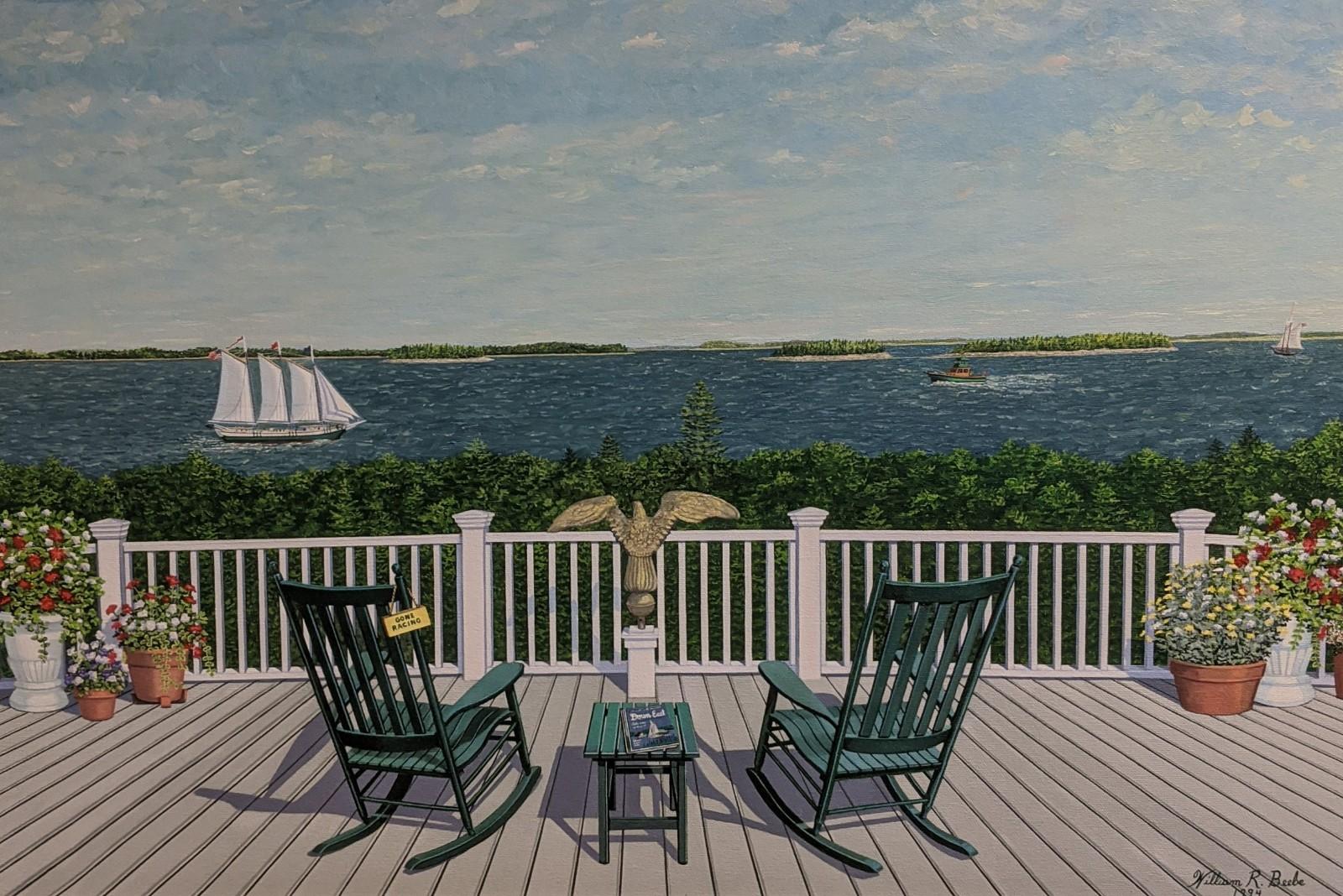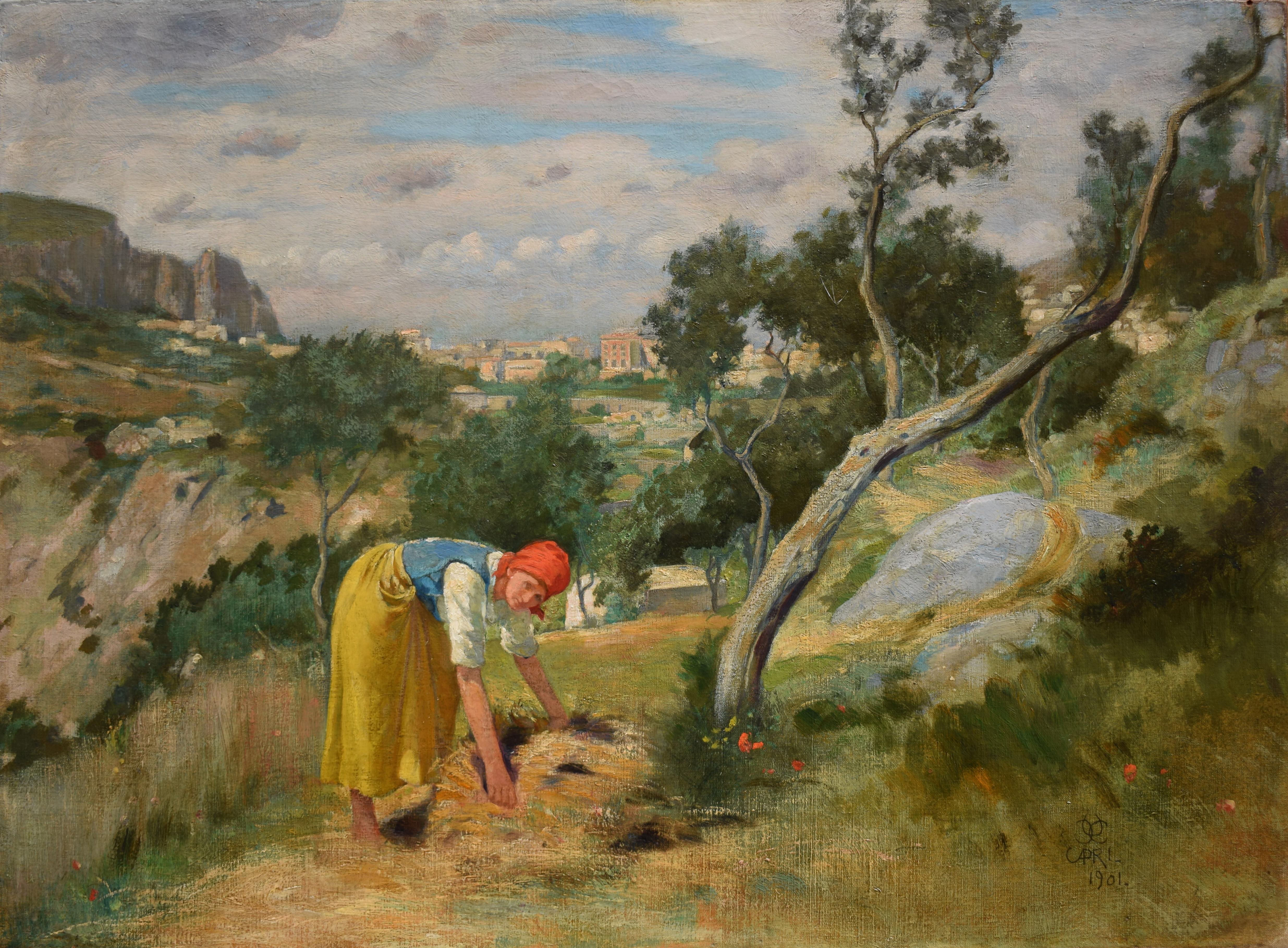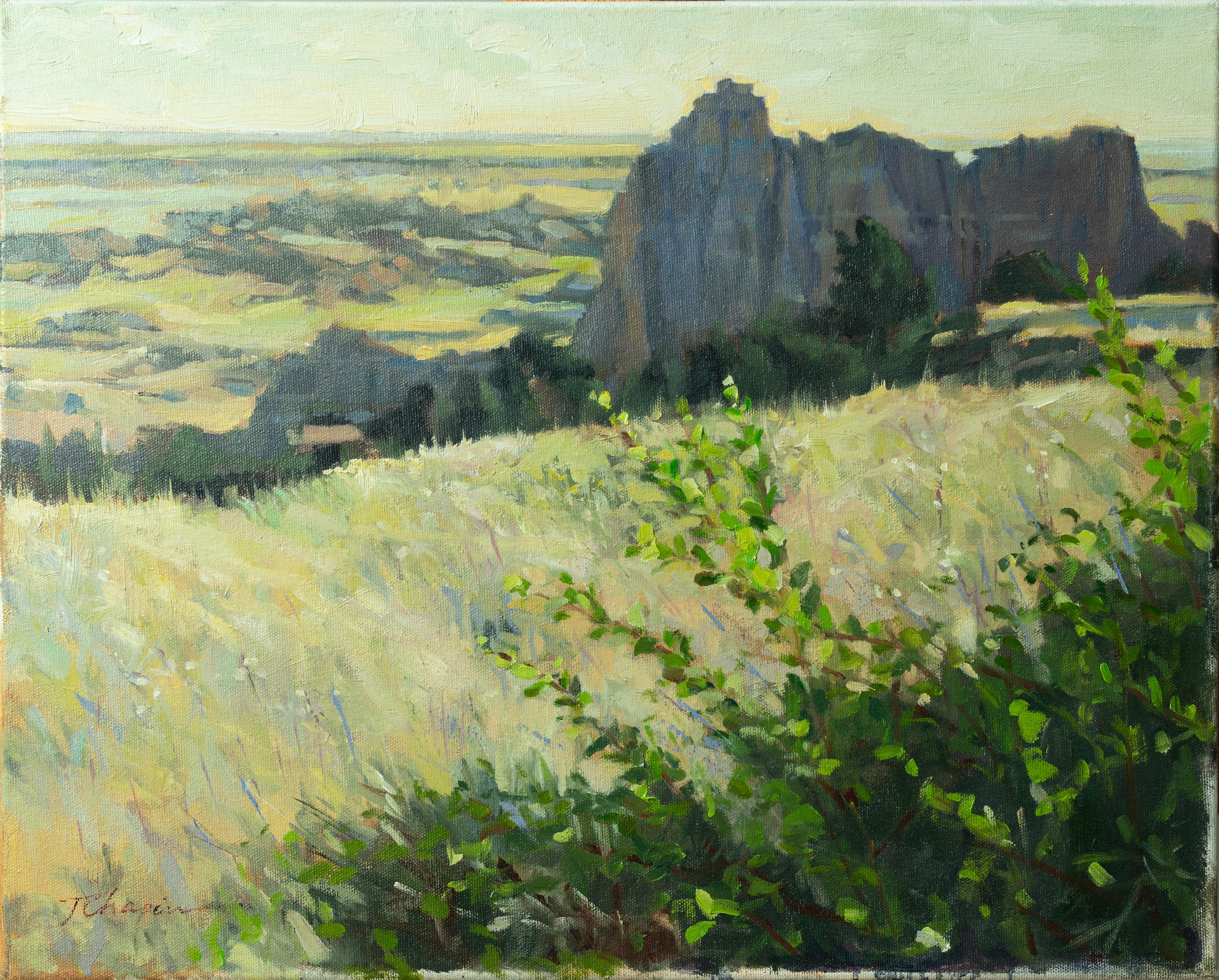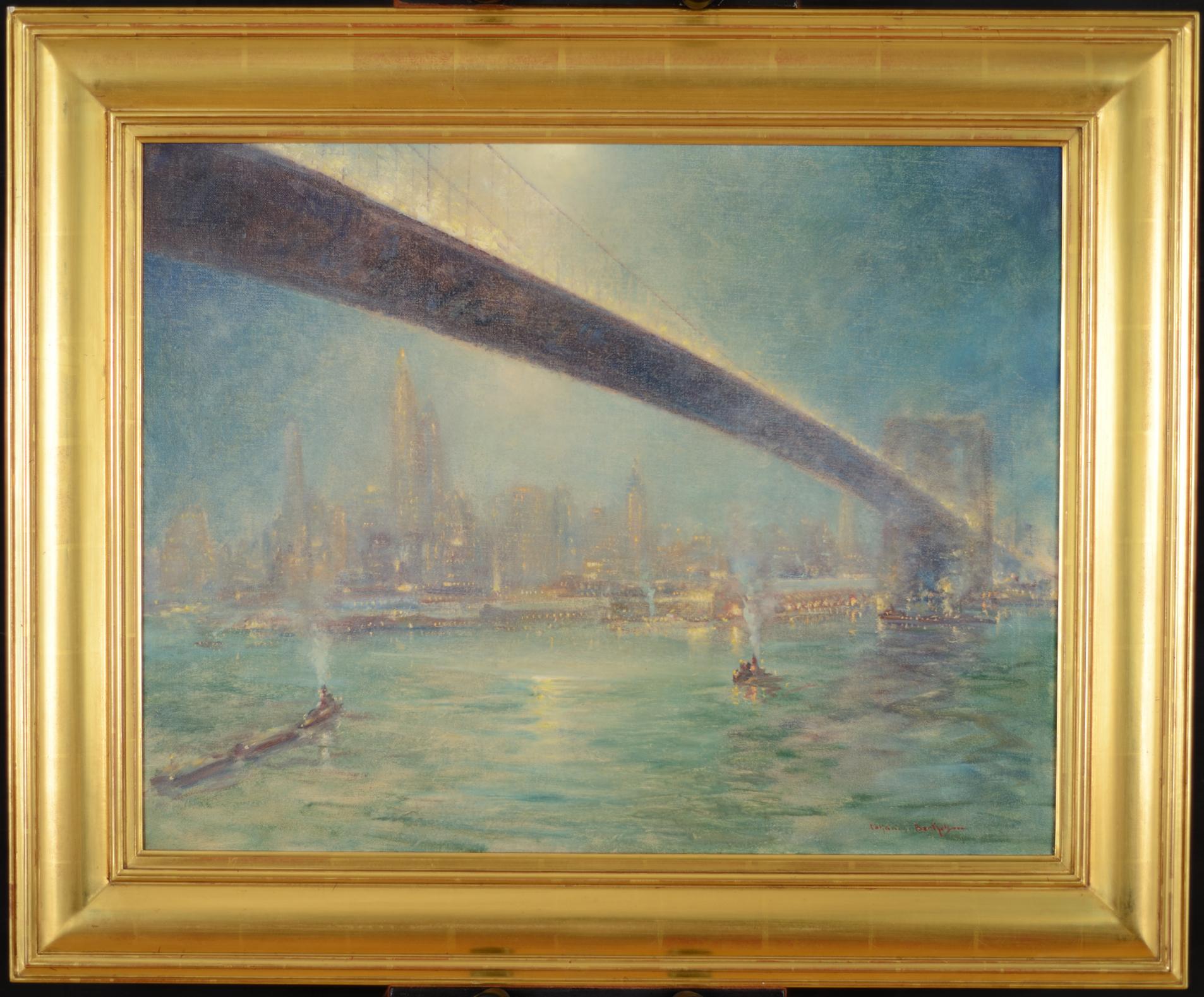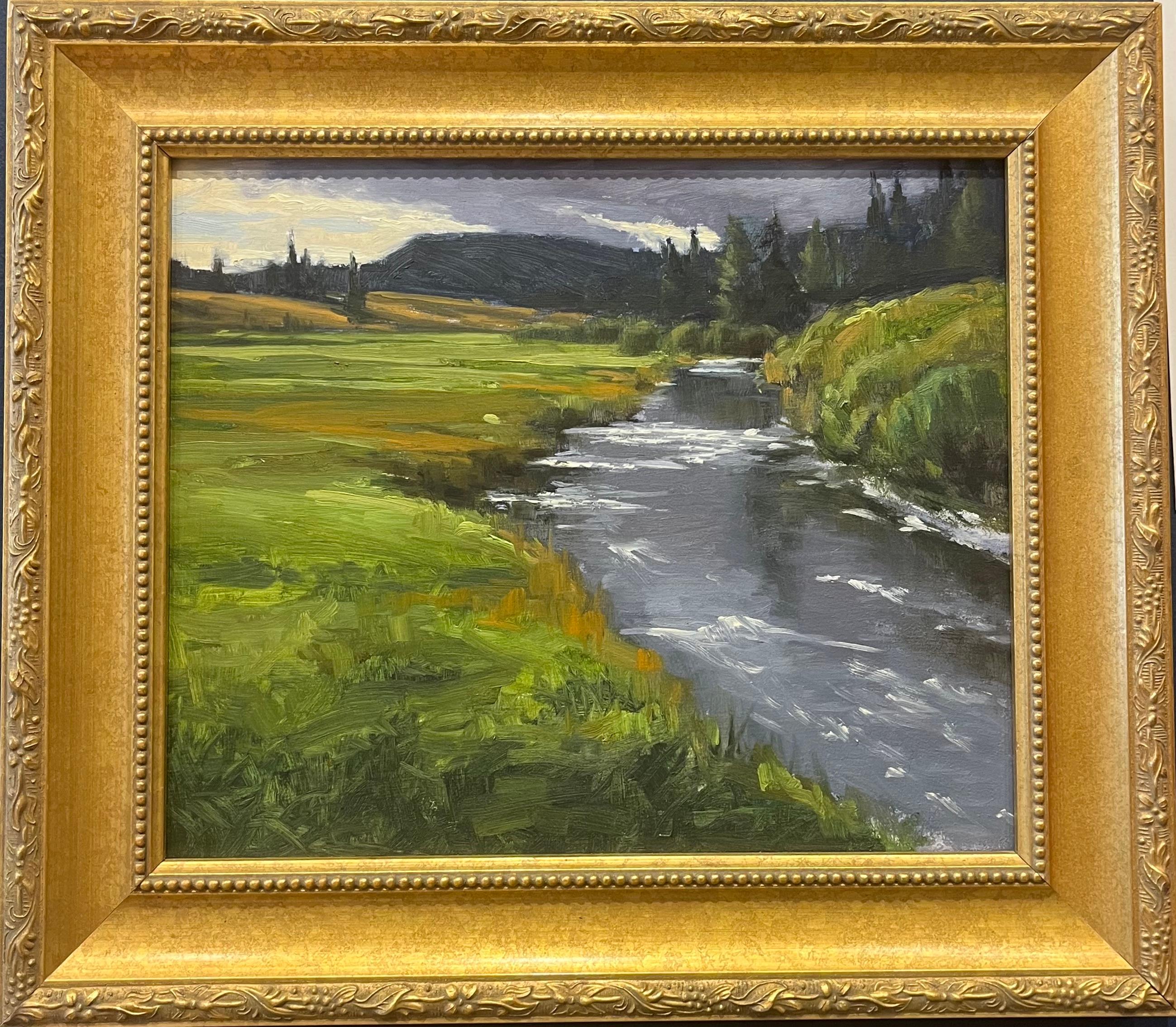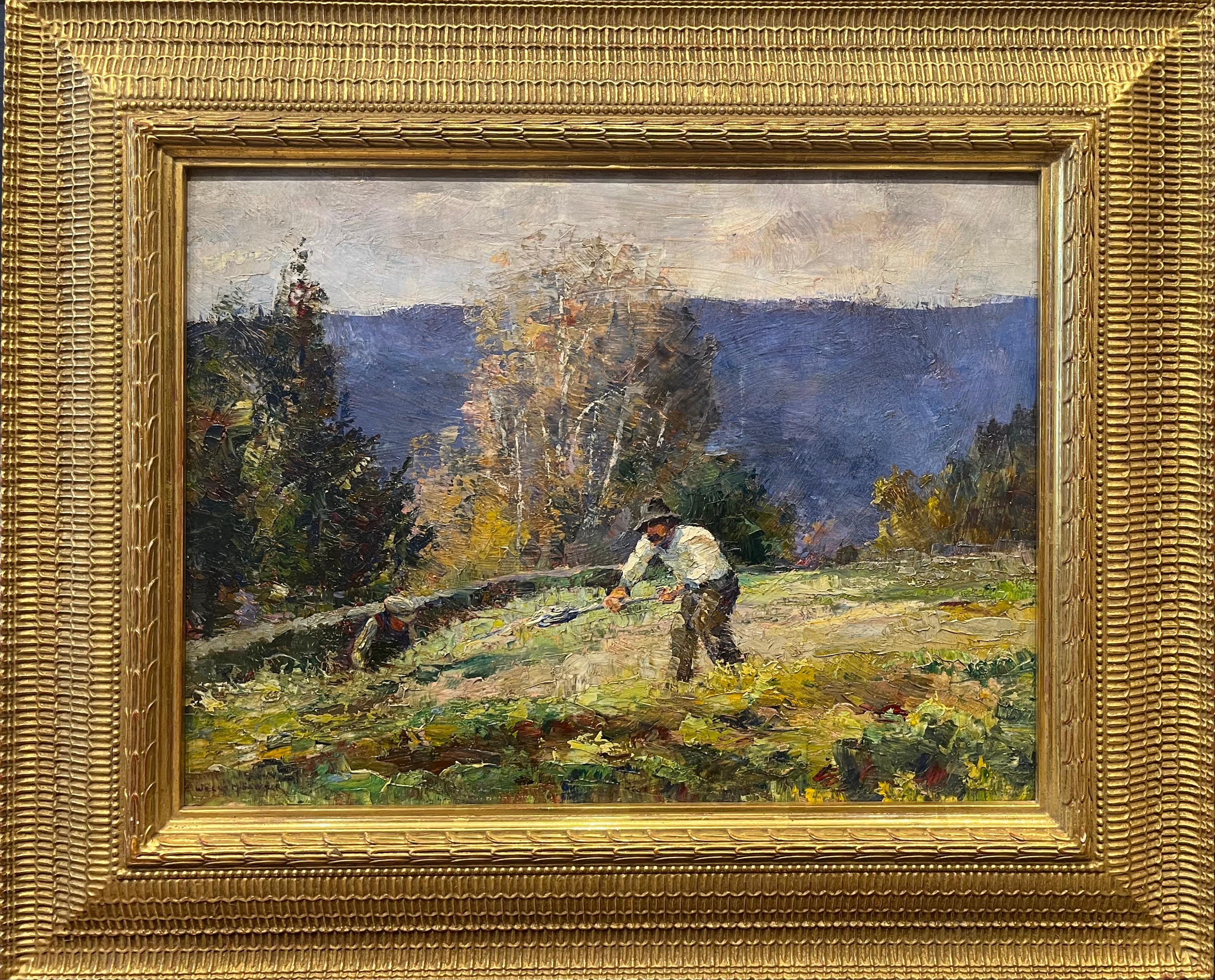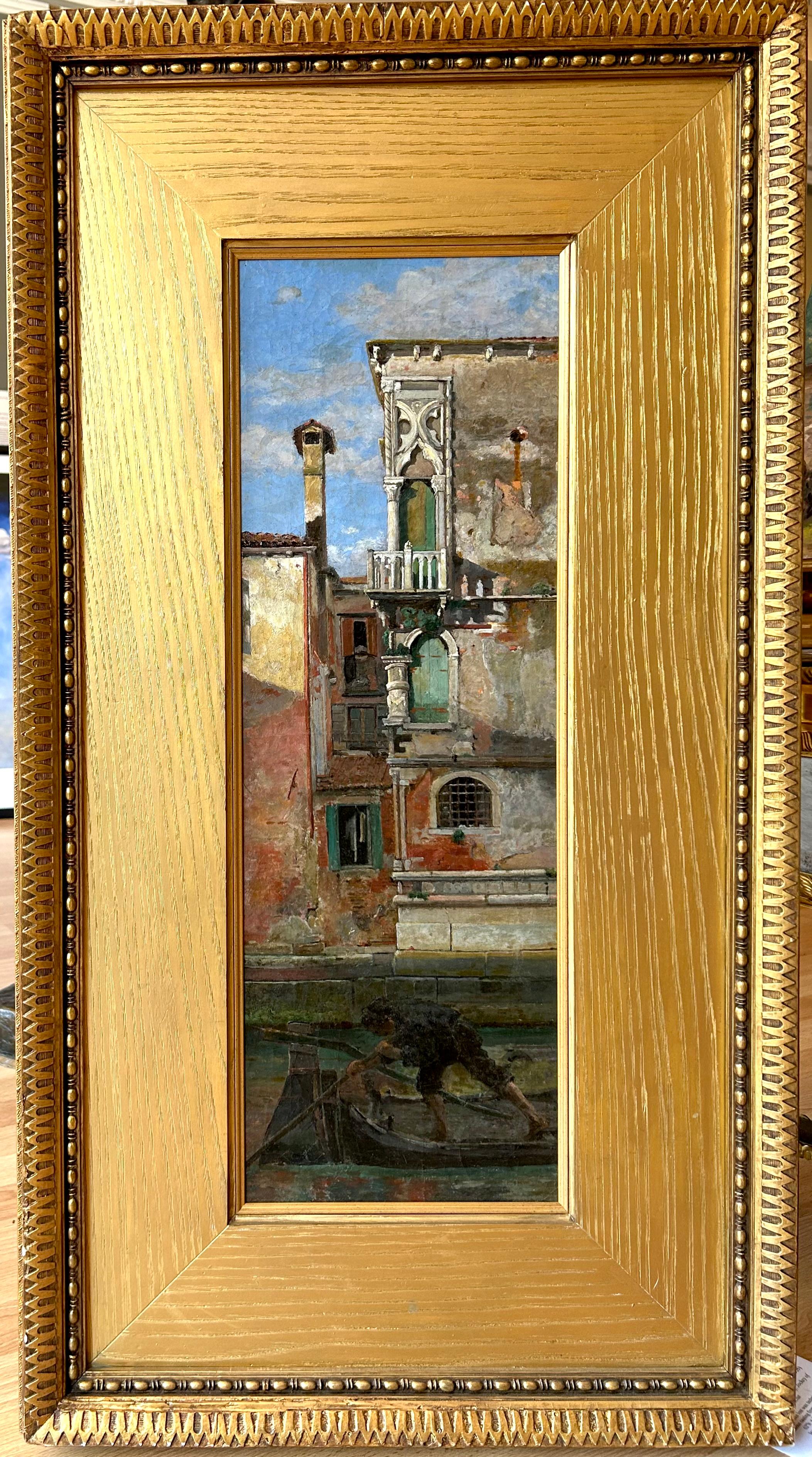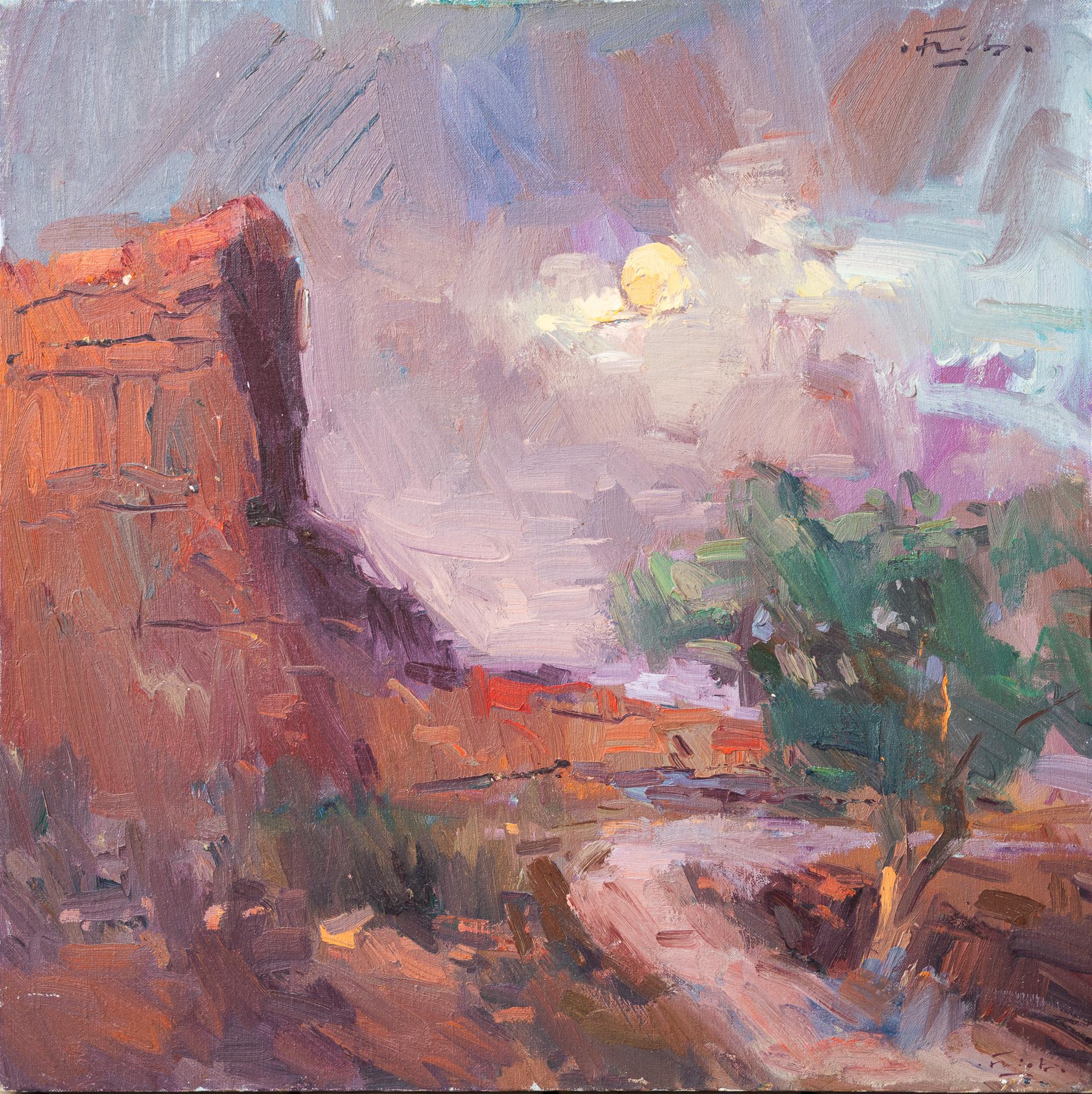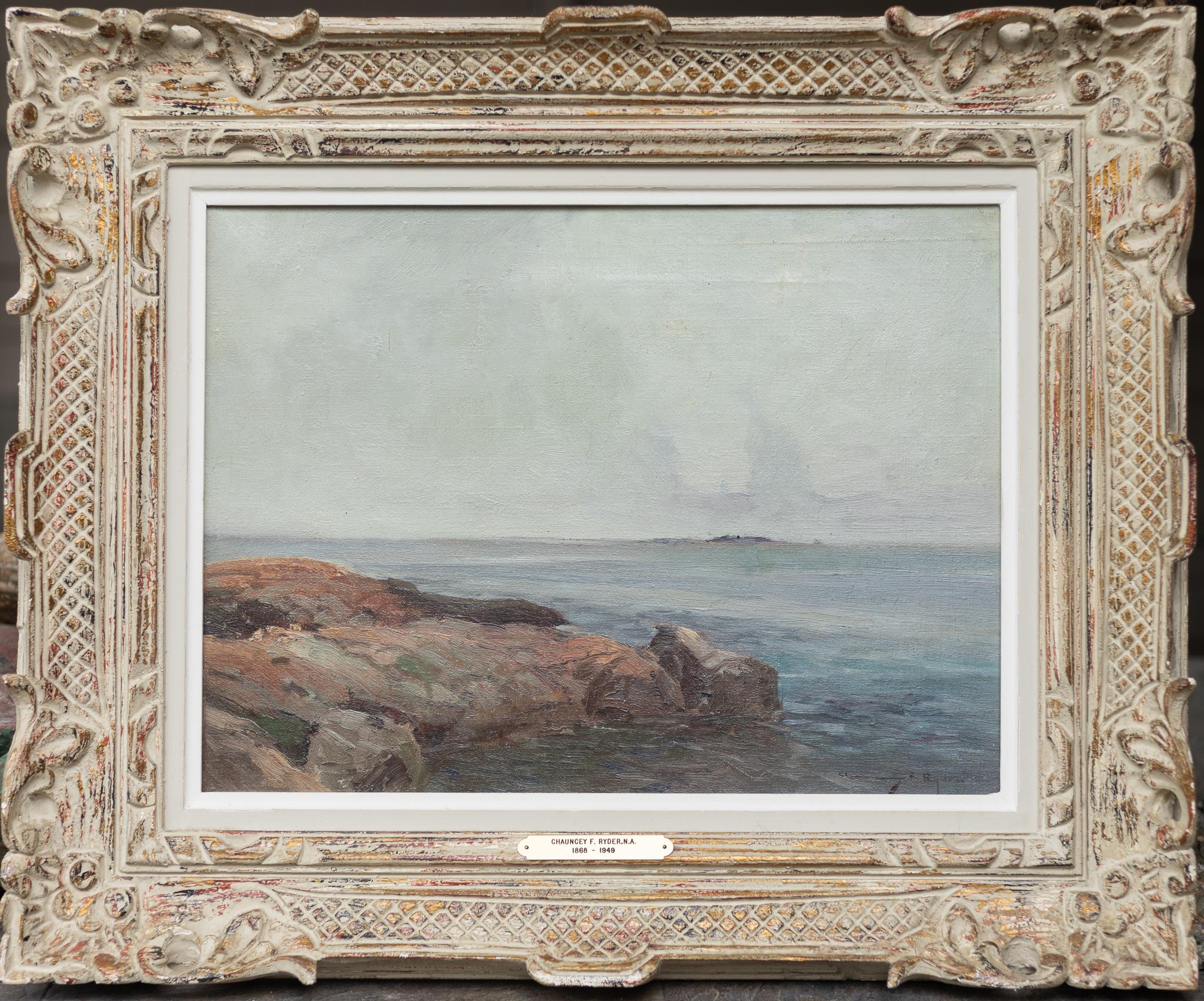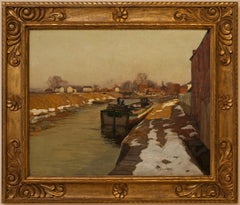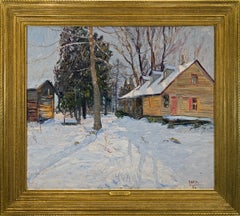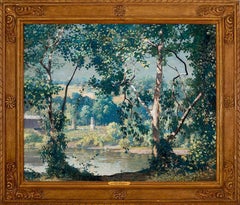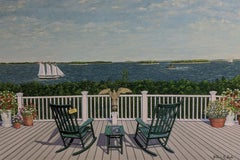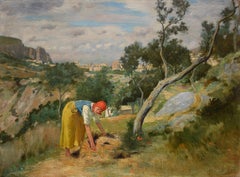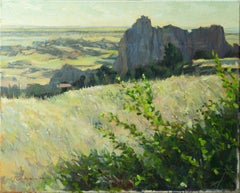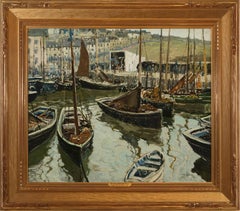
"The Inner Harbor, Polperro"
View Similar Items
Want more images or videos?
Request additional images or videos from the seller
1 of 5
Walter Elmer Schofield"The Inner Harbor, Polperro"1914
1914
About the Item
- Creator:Walter Elmer Schofield (1867-1944, American)
- Creation Year:1914
- Dimensions:Height: 30 in (76.2 cm)Width: 36 in (91.44 cm)
- Medium:
- Movement & Style:
- Period:
- Condition:
- Gallery Location:Lambertville, NJ
- Reference Number:Seller: 235P1stDibs: LU374350802
About the Seller
5.0
Vetted Seller
These experienced sellers undergo a comprehensive evaluation by our team of in-house experts.
Established in 1997
1stDibs seller since 2014
36 sales on 1stDibs
Typical response time: 6 hours
More From This SellerView All
- "The Canal"By Edward Willis RedfieldLocated in Lambertville, NJJim’s of Lambertville is proud to offer this artwork. Signed lower left. Complemented by a hand carved and gilt frame. Illustrated in "Edward Redfield: Just Values and Fine Seeing" by Constance Kimmerle and the Pennsylvania Academy of the Fine Arts's Exhibition of Paintings by Edward Redfield (April 17 to May 16, 1909) brochure Edward Willis Redfield (1869 - 1965) Edward W. Redfield was born in Bridgeville, Delaware, moving to Philadelphia as a young child. Determined to be an artist from an early age, he studied at the Spring Garden Institute and the Franklin Institute before entering the Pennsylvania Academy from 1887 to 1889, where he studied under Thomas Anshutz, James Kelly, and Thomas Hovenden. Along with his friend and fellow artist, Robert Henri, he traveled abroad in 1889 and studied at the Academie Julian in Paris under William Bouguereau and Tony Robert-Fleury. While in France, Redfield met Elise Deligant, the daughter of an innkeeper, and married in London in 1893. Upon his return to the United States, Redfield and his wife settled in Glenside, Pennsylvania. He remained there until 1898, at which time he moved his family to Center Bridge, a town several miles north of New Hope along the Delaware River. Redfield painted prolifically in the 1890s but it was not until the beginning of the twentieth century that he would develop the bold impressionist style that defined his career. As Redfield’s international reputation spread, many young artists gravitated to New Hope as he was a great inspiration and an iconic role model. Edward Redfield remained in Center Bridge throughout his long life, fathering his six children there. Around 1905 and 1906, Redfield’s style was coming into its own, employing thick vigorous brush strokes tightly woven and layered with a multitude of colors. These large plein-air canvases define the essence of Pennsylvania Impressionism. By 1907, Redfield had perfected his craft and, from this point forward, was creating some of his finest work. Redfield would once again return to France where he painted a small but important body of work between 1907 and 1908. While there, he received an Honorable Mention from the Paris Salon for one of these canvases. In 1910 he was awarded a Gold Medal at the prestigious Buenos Aires Exposition and at the Panama-Pacific Exposition of 1915 in San Francisco, an entire gallery was dedicated for twenty-one of his paintings. Since Redfield painted for Exhibition with the intent to win medals, his best effort often went into his larger paintings. Although he also painted many fine smaller pictures, virtually all of his works were of major award-winning canvas sizes of 38x50 or 50x56 inches. If one were to assign a period of Redfield’s work that was representative of his “best period”, it would have to be from 1907 to 1925. Although he was capable of creating masterpieces though the late 1940s, his style fully matured by 1907 and most work from then through the early twenties was of consistently high quality. In the later 1920s and through the 1930s and 1940s, he was like most other great artists, creating some paintings that were superb examples and others that were of more ordinary quality. Redfield earned an international reputation at a young age, known for accurately recording nature with his canvases and painting virtually all of his work outdoors; Redfield was one of a rare breed. He was regarded as the pioneer of impressionist winter landscape painting in America, having few if any equals. Redfield spent summers in Maine, first at Boothbay Harbor and beginning in the 1920s, on Monhegan Island. There he painted colorful marine and coastal scenes as well as the island’s landscape and fishing shacks. He remained active painting and making Windsor style furniture...Category
Early 1900s American Impressionist Landscape Paintings
MaterialsCanvas, Oil
- "Winter Sunlight"By Walter Emerson BaumLocated in Lambertville, NJJim’s of Lambertville Fine Art Gallery is proud to present this piece by Walter Emerson Baum (1884 - 1956). Born in Sellersville, Pennsylvania, Walter Baum was one of the only membe...Category
1930s American Impressionist Landscape Paintings
MaterialsCanvas, Oil
- "Fields in Jersey"By Daniel GarberLocated in Lambertville, NJJim’s of Lambertville Fine Art Gallery is proud to present this piece by Daniel Garber (1880 - 1958). One of the two most important and, so far, the most valuable of the New Hope Sc...Category
Early 1900s American Impressionist Landscape Paintings
MaterialsCanvas, Oil
- "Christmas Time, Sellersville"By Walter Emerson BaumLocated in Lambertville, NJJim’s of Lambertville Fine Art Gallery is proud to present this piece by Walter Emerson Baum (1884 - 1956). Born in Sellersville, Pennsylvania, Walter Baum was one of the only membe...Category
1930s American Impressionist Landscape Paintings
MaterialsCanvas, Oil
- "End of the Day, Gloucester Harbor"By John Fulton FolinsbeeLocated in Lambertville, NJJim's of Lambertville Fine Art Gallery is proud to present this piece by John Fulton Folinsbee (1892 - 1972). One of the finest painters to embark upon the New Hope Art Colony, John...Category
1910s American Impressionist Landscape Paintings
MaterialsCanvas, Oil
- "In Port"By Edward Willis RedfieldLocated in Lambertville, NJJim’s of Lambertville is proud to offer this artwork by: Edward Willis Redfield (1869 - 1965) Edward W. Redfield was born in Bridgeville, Delaware, moving to Philadelphia as a young child. Determined to be an artist from an early age, he studied at the Spring Garden Institute and the Franklin Institute before entering the Pennsylvania Academy from 1887 to 1889, where he studied under Thomas Anshutz, James Kelly, and Thomas Hovenden. Along with his friend and fellow artist, Robert Henri, he traveled abroad in 1889 and studied at the Academie Julian in Paris under William Bouguereau and Tony Robert-Fleury. While in France, Redfield met Elise Deligant, the daughter of an innkeeper, and married in London in 1893. Upon his return to the United States, Redfield and his wife settled in Glenside, Pennsylvania. He remained there until 1898, at which time he moved his family to Center Bridge, a town several miles north of New Hope along the Delaware River. Redfield painted prolifically in the 1890s but it was not until the beginning of the twentieth century that he would develop the bold impressionist style that defined his career. As Redfield’s international reputation spread, many young artists gravitated to New Hope as he was a great inspiration and an iconic role model. Edward Redfield remained in Center Bridge throughout his long life, fathering his six children there. Around 1905 and 1906, Redfield’s style was coming into its own, employing thick vigorous brush strokes tightly woven and layered with a multitude of colors. These large plein-air canvases define the essence of Pennsylvania Impressionism. By 1907, Redfield had perfected his craft and, from this point forward, was creating some of his finest work. Redfield would once again return to France where he painted a small but important body of work between 1907 and 1908. While there, he received an Honorable Mention from the Paris Salon for one of these canvases. In 1910 he was awarded a Gold Medal at the prestigious Buenos Aires Exposition and at the Panama-Pacific Exposition of 1915 in San Francisco, an entire gallery was dedicated for twenty-one of his paintings. Since Redfield painted for Exhibition with the intent to win medals, his best effort often went into his larger paintings. Although he also painted many fine smaller pictures, virtually all of his works were of major award-winning canvas sizes of 38x50 or 50x56 inches. If one were to assign a period of Redfield’s work that was representative of his “best period”, it would have to be from 1907 to 1925. Although he was capable of creating masterpieces though the late 1940s, his style fully matured by 1907 and most work from then through the early twenties was of consistently high quality. In the later 1920s and through the 1930s and 1940s, he was like most other great artists, creating some paintings that were superb examples and others that were of more ordinary quality. Redfield earned an international reputation at a young age, known for accurately recording nature with his canvases and painting virtually all of his work outdoors; Redfield was one of a rare breed. He was regarded as the pioneer of impressionist winter landscape painting in America, having few if any equals. Redfield spent summers in Maine, first at Boothbay Harbor and beginning in the 1920s, on Monhegan Island. There he painted colorful marine and coastal scenes as well as the island’s landscape and fishing shacks. He remained active painting and making Windsor style furniture...Category
Early 1900s American Impressionist Landscape Paintings
MaterialsCanvas, Oil
You May Also Like
- Deck of FoxhillLocated in Greenville, DEMarine scene from the deck of a Maine estate (Foxhill). William Beebe considers himself a Creative Realist, using touches of impressionism to go beyond representation. This particula...Category
20th Century American Impressionist Landscape Paintings
MaterialsOil, Canvas
- Peasant woman at work in the fields of CapriBy Charles Caryl ColemanLocated in Roma, RMCharles Caryl Coleman (Buffalo 1840 – Capri 1928), Peasant woman at work in the fields of Capri (1901) Oil painting on canvas 35 x 49 cm, signed, located and dated Capri 1901 lower ...Category
Early 1900s American Impressionist Landscape Paintings
MaterialsCanvas, Oil
- Badlands (South Dakota) - Plein Air Landscape painting green yellow colorsBy Jane ChapinLocated in Cody, WYThis is a 'Plein Air" landscape Painting by Jane Chapin as seen in the viewing room exhibition on Silas VON MORISSE GALLERY. “Plein-Air” is the French expression to describe the act...Category
2010s American Impressionist Landscape Paintings
MaterialsCanvas, Oil
- The Pond, Godfrey's Pond, Batavia, New York, Stafford, American LandscapeLocated in Grand Rapids, MIStuart E. Zillman (American, 20th Century) Signed: Stuart E. Zillman (Lower, Right) " The Pond ", c. 1960s (Possibly Godfrey's Pond) Oil on Canvas Board 16" x 20" Housed in a 1...Category
Mid-20th Century American Impressionist Landscape Paintings
MaterialsCanvas, Oil
- Bridge Nocturne oil painting by Johann BerthelsenBy Johann Berthelsen, 1883-1972Located in Hudson, NYOne of Johann Berthelsen's iconic nocturne views of New York City across the Hudson River. Bridge Nocturne (c.1945) Oil on canvas, 22" x 28" 29 ½" x 36" x 2" framed Signed "Johann ...Category
1940s American Impressionist Landscape Paintings
MaterialsCanvas, Oil
- Oil River and Mountain LandscapeLocated in Fredericksburg, VAThis oil on canvas landscape painting depicts a grassy river scene with mountains in the distance. The brushstrokes are very representative of the impressionist movement, but the col...Category
Late 20th Century American Impressionist Landscape Paintings
MaterialsCanvas, Oil
